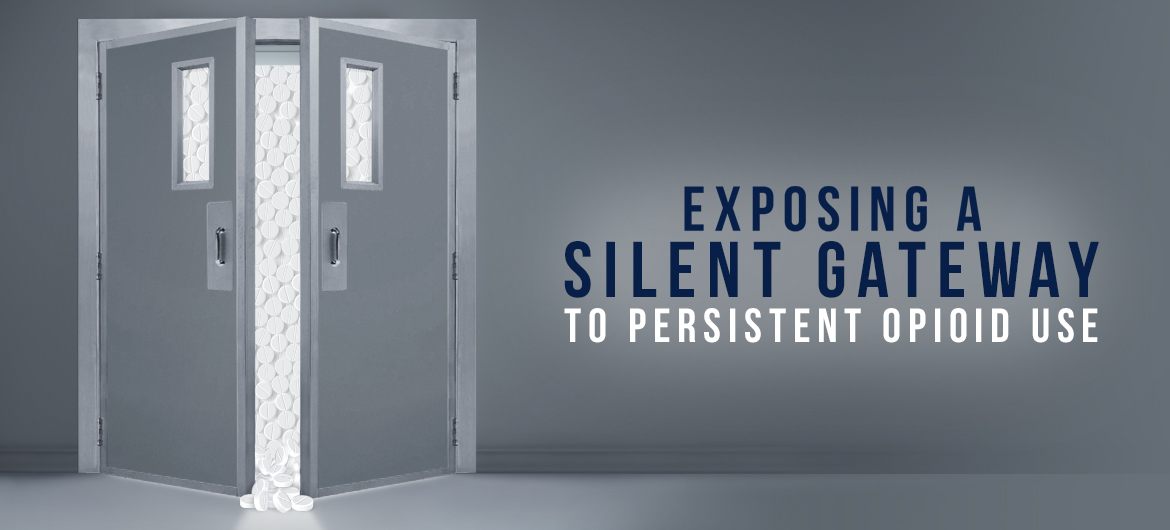Despite ongoing efforts to end America’s opioid crisis, patients continue to receive large quantities of opioids for postsurgical pain. New research shows that patients received nearly 100 to 200 opioid pills to help manage pain from four common procedures ranging from rotator cuff repair and hip replacement to knee replacement and sleeve gastrectomy. Further, one-quarter of orthopedic surgery patients were prescribed a daily dose of opioids equal to 90 milligrams of morphine or more – doses so potent that the Centers for Disease Control and Prevention (CDC) says they put patients at high risk for overdose. The research also reveals that nearly two-thirds of surgeons frequently feel pressure to prescribe more opioids than they think necessary to treat postsurgical pain.
These findings come from a new report, Exposing a Silent Gateway to Persistent Opioid Use – A Choices Matter Status Report, based on an analysis of 2017 adjudicated medical and pharmacy claims data conducted by IQVIA Institute for Human Data Science and a nationwide survey of surgical patients and surgeons fielded in 2018 by Wakefield Research.
The report shows that, across the seven orthopedic and soft tissue surgical procedures examined, patients were prescribed an average of 82 opioid pills each to help manage postsurgical pain. Close to nine percent of surgical patients became newly persistent users in 2017, continuing to take these opioids at least three to six months after their procedure. Among patients having knee replacement surgery or a colectomy, newly persistent opioid users climbed as high as 15 percent and 17 percent, respectively. Further, women were 40 percent more likely to become persistent opioid users than men; and among persistent users, females were prescribed 15 percent more opioids than their male counterparts.
Especially Concerning Trends Were Seen Among Millennials
While there was some decline overall in persistent opioid use from 2016 to 2017, the number of millennial women (ages 18-34) who became persistent users rose 17 percent over that year. Additionally, an alarming 18 percent of millennials surveyed reported they became addicted to or dependent on opioids following surgery. According to the CDC, overdose deaths among millennials increased almost 50 percent between 2014 and 2016.
“There is always a risk when exposing patients to opioids, so it’s incumbent on surgeons to be extremely cautious and minimize the use of these medications whenever possible,” said Paul Sethi, M.D., orthopedic surgeon at Orthopaedic & Neurosurgery Specialists (ONS) and President of the ONS Foundation for Clinical Research and Education. “While there are effective non-opioid options that should be incorporated in the treatment of surgery patients, this report shows that not enough progress is being made in reducing opioid prescribing, even though we know that most opioid addictions start with a prescription.”
Overprescribing of opioids not only puts patients at risk of persistent use, addiction or dependence, but also results in unused pills available for potential misuse or abuse by others. According to the report:
- Nearly one-in-five surgical patients who refilled an opioid prescription admitted they did so even though they no longer needed the drug to manage their pain.
- The vast majority of survey respondents (nearly 90 percent) with leftover pills reported they did not dispose of them properly, with many keeping them in their homes and, in some cases, sharing them with family and friends.
- Almost half of 40 to 54 year-old patients with leftover opioids kept the pills in their home – an age range typical of parents of teenage children who are at high risk for diversion and misuse.
“Opioids are ravaging communities across the country with more Americans now dying of overdoses than car crashes – and most of those individuals began by using prescription opioids,” said Fred Muench, President and CEO of Partnership for Drug-Free Kids, a non-profit organization that is committed to helping families that are affected by substance use and addiction. “It’s critically important for all patients – and especially parents and caregivers – to safely dispose of unused opioids to prevent them from falling into the wrong hands. An even more impactful solution would be for clinicians to discuss alternatives, including non-opioid options, with their patients to develop individualized approaches that reduce the need for high volumes of opioids after injuries and surgery, to help limit the availability of leftover pills in our households and communities.”
The report also examined the annual total number of opioids prescribed nationwide for all clinical reasons, not just surgery, and found that enough opioids were dispensed in 2017 for every American to have 32 pills each, an 11 percent decline from 2016. While fewer pills were dispensed, patients in Tennessee, Oklahoma and Delaware were exposed to extremely high daily doses of opioids based on morphine milligram equivalency, putting them at greater risk of addiction and overdose.
For more information and to download Exposing a Silent Gateway to Persistent Opioid Use – A Choices Matter Status Report, visit our 2018 National Report page.

